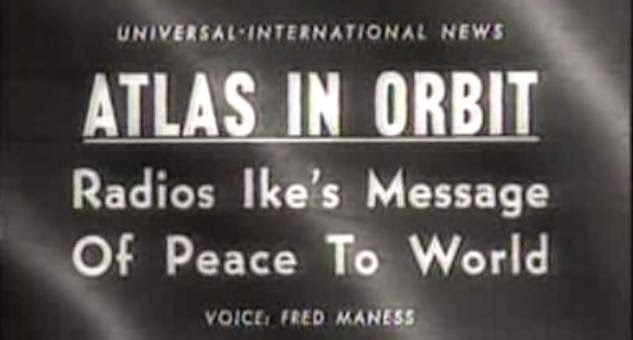by
Mark Ollig
Alright,
here we are at the end of another year; and yes, I will say it, “Where did this
year go?”
When
I was 30 years younger, I recall being given this pearl of wisdom by someone in
their middle 50’s, “Enjoy each year, because when you get to my age, you will
find the years going by much faster than you do now.”
Today,
I fully understand what this means.
So,
it’s going to be 2014 on Wednesday – I can deal with that . . . really, I can.
After
typing “2014” and staring at it for a few seconds, for some reason, it caused
me to think about the following year; 2015.
Gosh,
2015 is getting closer to Buck Rogers and Star Trek territory, isn’t it? I
mean, 2015 looks so futuristic when one looks at it.
Where
did 2014 go? It seems like we just started it.
Wait
a minute Mark, this new year, 2014, hasn’t gone by us quite that fast – yet.
Possibly,
I have some kind of number phobia.
This
might be a result of working in the telephone business for too many years, as I
deal with numbers every day.
At
one time, yours truly had memorized most of the telephone numbers for the local
businesses in his hometown; not only that, he could recall many of the cable
pair numbers, too. (Physical set of wires used from the telephone company
central office to the location where the telephone line terminates).
As
I write this column, we are just days away from 2014; and, for some reason, my
mind jumped back, and is now stuck in 1984.
Just
think . . . George Orwell’s book written about the frightening futuristic year
1984, is about to become 30 years behind us.
Even
more amazing, Orwell was writing this book back in 1948, and it was published
in 1949.
While
we are nostalgically remembering 1984, let’s re-visit some of music we listened
to.
In
1984, the top songs included Kenny Loggins’ “Footloose,” Tina Turner’s “What’s
Love Got to Do With It,” Van Halen’s “Jump,” The Culture Club’s popular “Karma
Chameleon,” and, of course, who could forget this song (and movie of the same
name) by Ray Parker Jr., “Ghostbusters”.
While
visiting Billboard’s website, I did a search and found the number-one ranked
song for 1984 was recorded by Minnesota’s own artist, Prince, called “When
Doves Cry.”
For
1983, Billboard had the song, “Every Breath You Take,” by the group Police, as number
one.
Gosh,
has it really been 30 years since we first heard Michael Jackson’s “Billie
Jean” on the radio?
For
2013, Billboard’s top artist is Bruno Mars, who, by the way, once held the
title as the “Youngest Elvis Impersonator.”
Billboard
selected “Thrift Shop” by Macklemore and Ryan Lewis, as the number one song for
2013.
One
singer (many of you know I always enjoy listening to) holds the title for the
largest selling Christmas album of all time. Yes, it is Elvis, and his 1957
“Elvis Christmas Album,” which to date has sold over 10 million copies.
But,
I digress.
So,
what technology can we expect to hear more about in 2014?
No
doubt, Google Glass will be one of them, as it is still on schedule to make its
appearance to the public early in 2014.
You
may recall from my May 6 column how Google Glass is worn like eyeglasses. There
is a small glass display cube attached to the upper-right side of an aluminum
headband containing computing processing capabilities. This is where the wearer
looks to see the information being presented.
And,
of course, we will see new Apple iPhones and iPads – possible new size
configurations may be offered to us.
I
also forecast we will be seeing some new wearable technology. Perhaps, Apple
will bring us its much anticipated iWatch.
In
June 2012, I wrote how someday “many of us may be sporting a personal health
monitoring sensor, or an environmental measuring device, or an entertainment or
social media interface, or some other type of application on a flexible,
organic, electronic video display screen – wearable or interwoven into our
clothing.”
Will
2014 be the year we begin seeing organic electronics being used in wearables?
Advanced
electronic sensors will be connecting more of the home and business appliances
we use in our daily lives to the Internet; we will access these sensors for
their information.
In
2014, expect to see more nanotechnology breakthroughs.
We
will also become more comfortable storing and retrieving our personal
information from the Cloud.
The
year 2014 looks to be an exciting time for those of us who love technology, so
stay tuned.
As
we boldly embark into this brand new year, I offer the young people this pearl
of wisdom, “Enjoy each year, because when you get to my age, you will find the
years going by much faster than you do now.”
My
New Year’s wish for all is to have a very happy, safe, successful, healthy, and
excitingly technology-filled 2014.





